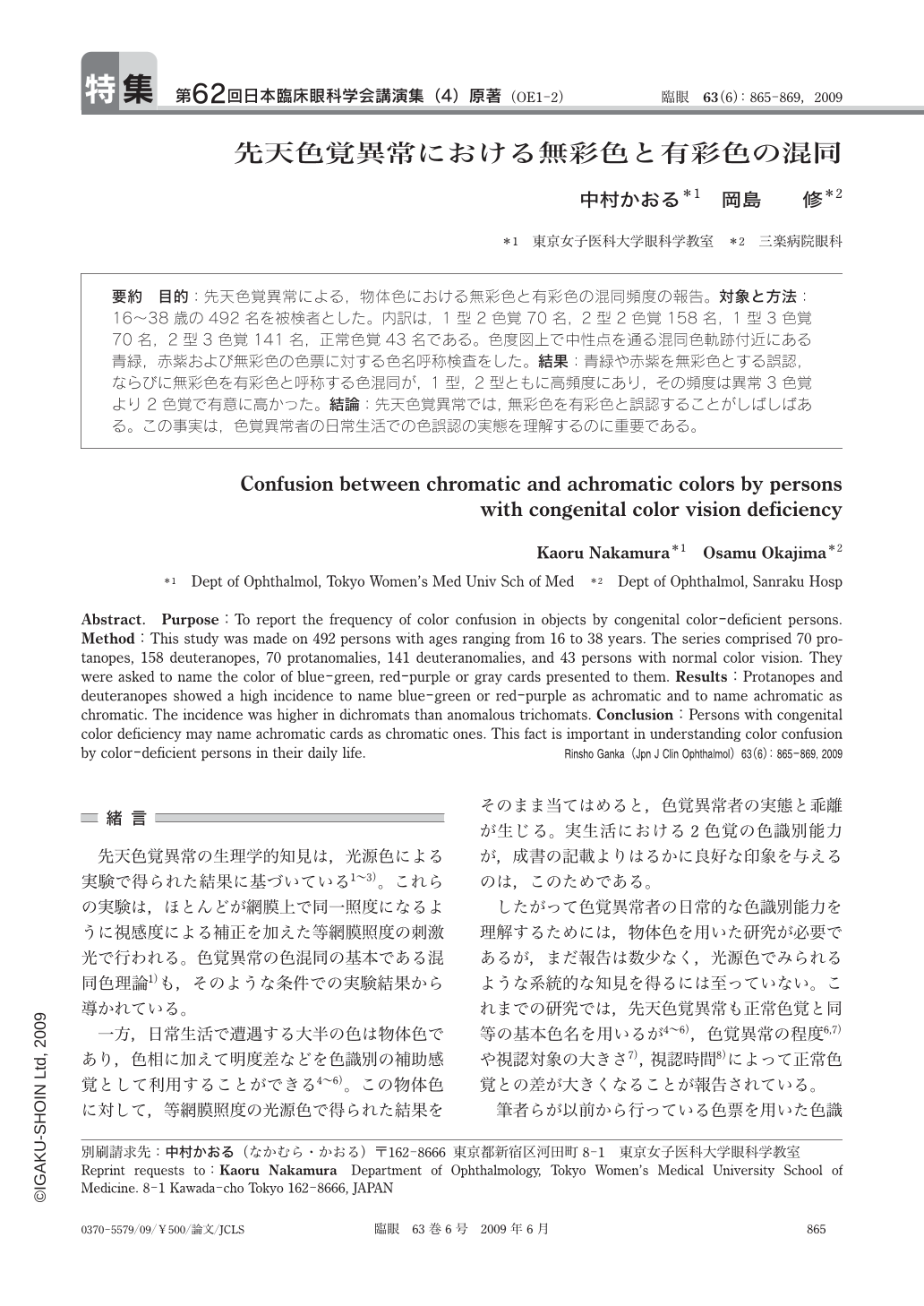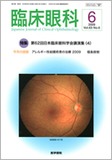Japanese
English
- 有料閲覧
- Abstract 文献概要
- 1ページ目 Look Inside
- 参考文献 Reference
要約 目的:先天色覚異常による,物体色における無彩色と有彩色の混同頻度の報告。対象と方法:16~38歳の492名を被検者とした。内訳は,1型2色覚70名,2型2色覚158名,1型3色覚70名,2型3色覚141名,正常色覚43名である。色度図上で中性点を通る混同色軌跡付近にある青緑,赤紫および無彩色の色票に対する色名呼称検査をした。結果:青緑や赤紫を無彩色とする誤認,ならびに無彩色を有彩色と呼称する色混同が,1型,2型ともに高頻度にあり,その頻度は異常3色覚より2色覚で有意に高かった。結論:先天色覚異常では,無彩色を有彩色と誤認することがしばしばある。この事実は,色覚異常者の日常生活での色誤認の実態を理解するのに重要である。
Abstract. Purpose:To report the frequency of color confusion in objects by congenital color-deficient persons. Method:This study was made on 492 persons with ages ranging from 16 to 38 years. The series comprised 70 protanopes,158 deuteranopes,70 protanomalies,141 deuteranomalies,and 43 persons with normal color vision. They were asked to name the color of blue-green,red-purple or gray cards presented to them. Results:Protanopes and deuteranopes showed a high incidence to name blue-green or red-purple as achromatic and to name achromatic as chromatic. The incidence was higher in dichromats than anomalous trichomats. Conclusion:Persons with congenital color deficiency may name achromatic cards as chromatic ones. This fact is important in understanding color confusion by color-deficient persons in their daily life.

Copyright © 2009, Igaku-Shoin Ltd. All rights reserved.


